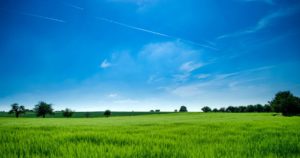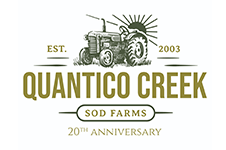
Kentucky Bluegrass is one of the most beautiful forms of grass there is.
Kentucky Bluegrass is one of the most beautiful varieties of lawn grass out there. It’s known for its beautiful bluish-green color resembling an emerald and lush, thick coverage. In addition, Kentucky Bluegrass is one of the more durable types of grass varieties on the market, making it a perfect choice for properties with lots of walkers, pets, or kids. However, KBG is a rather high maintenance grass. This makes this grass a great choice for those who love to take care of and cultivate their lawns and landscape frequently. Here’s a brisk guide on what to expect when laying down Kentucky Bluegrass sod for a beautiful lawn.
Physical Properties of Kentucky Bluegrass
Surprisingly, although most of the grass currently used in Kentucky’s agriculture is bluegrass, Kentucky Bluegrass originated over in the eastern hemisphere in Eastern Europe or Asia. Bluegrass is a cool-season lawn grass that is perfect for the northern climates of the United States with warm to hot summers but cool winters. It is a premier choice of Maryland homeowners and farmers due to this inherent property. Kentucky bluegrass is characterized by its shape unique in the grass world. Each blade resembles something like a canoe boat, where it is tapered off at the top and bottom.
How To Plant Kentucky Bluegrass Sod
Kentucky bluegrass sod is a bit unusual when compared to other grass types like Zoysia sod. KBG has a slower germination period than most other grass types, which means it must be planted slightly earlier than other varieties to grow on time and in a healthy manner. This means it should be planted in the early Fall, no later and no earlier. KBG grass should be planted in areas with a decent amount of sun exposure. The more sun, the better, but it can also grow in some shaded areas. Places with lots of trees or other foliage coverage are not recommended for KBG.
How to Care for KBG
KBG, as mentioned earlier, requires more maintenance than other grass sod types. For example, it needs more frequent watering than other varieties. In normal weather, KBG requires at least one inch of water per week, while in warmer parts of the year, it will require two inches of water. It’s recommended to use a sprinkler or irrigation system during these months to keep your Kentucky bluegrass happy and healthy. In addition, Kentucky bluegrass should be mowed to around 2 inches in height, which is different than other grass types. Lastly, KBG needs more fertilizing than other types of grass. Make sure to keep your soil at a pH of 5.8-7 to maintain the beautiful color of the grass as well.
Have More Questions? Stay in Touch!
Order early and order often to ensure the best service possible. Contact us through our online page. Please find us at 27616 Little Lane, Salisbury, Maryland 21801. Our phone number is 410-726-6103, and our fax number is 410-742-6550. Speak to Jason Anderson for Turf Grass Sales. Reach him by email at jason@quanticocreeksod.com. Finally, follow us on social media on Facebook, LinkedIn, and our blog!
